6 computer labs that gave birth to the digital world
“And the geniuses united in one place in order to present something to the world! "
So it turned out throughout the history of digital technology.
Let us list 6 laboratories that have made, in my opinion, the most significant contribution to the development of digital technologies:
Bletchley Park
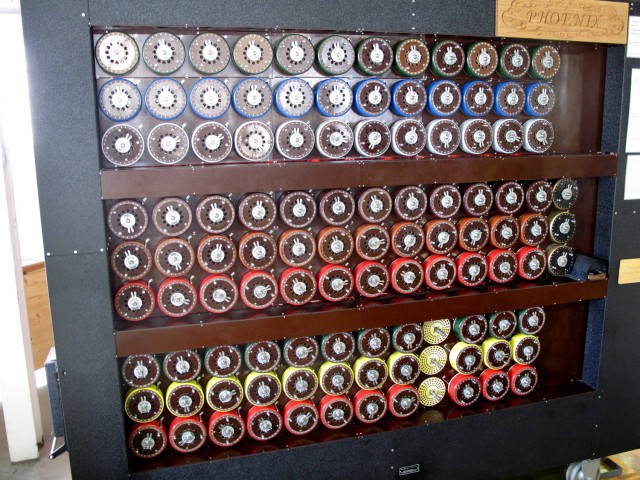
')
She holds the title of "first computer lab." It began to develop during the First World War in Great Britain. Bletchley Park was tasked with not only deciphering the communications of the Nazi Wehrmacht, but also with the development of new cryptographic systems in order to keep the Allied armies and fleet safe.
Even today, 65 years after the war, we do not know which inventions arose from Bletchley Park as a state secret. 12,000 of its employees were required to sign a non-disclosure pact. Many achievements in the field of cryptography and cryptanalysis were made by Alan Turing, but they invented not only Bombe, which was one of the first electromechanical computers and the key to deciphering the German Enigma machine. Bletchley Park is also home to the first colossus programmable digital computer.
Laboratory "Volta"
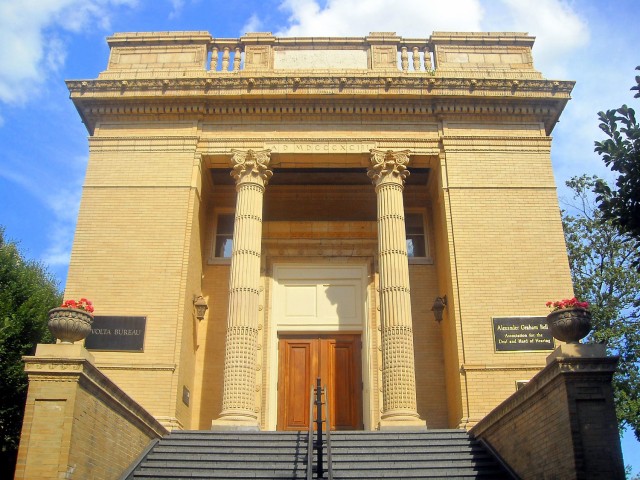
The Volta Laboratory was created in Washington with the money that Alexander Graham Bell (erroneously) was awarded for inventing the telephone.
Volta Laboratories ascribes early innovations that led to the invention of fiber-optic networks, magnetic data storage, and even the invention of office machines. These patented inventions — Bell’s original telephones, and many others — will form the basis of Bell’s American telephone company. This company was eventually exterminated by its subsidiaries, for tax reasons, believe it or not.
Bell Labs
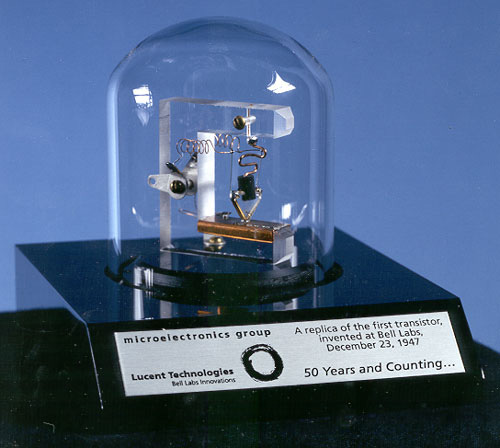
If Volta Lab laid the foundation for networks, and Bletchley Park became a pioneer in computer hardware and software, Bell Labs are the cornerstone that combined both concepts to create high-performance computing architectures. In 1925, AT & T and Western Electric joined the research teams at Bell Laboratories in the construction of the Manhattan branch, with the main goal of developing the best switches for telephone exchanges for the fastest growing telephony in North America.
Yet, the researchers found much more than telephone switches. In the laboratory, Bell invented the undecipherable one-time block cipher, radio astronomy, stereo recordings, speech synthesis, photoelectric elements and, most importantly, in 1947, the transistor. The most famous inventor at Bell Lab is probably Claude Shannon - one of the founding fathers of information theory, along with Alan Turing, and the inventor of modern, mathematical cryptography.
The Bell Labs story, however, does not end there. In the 1960s, Bell Laboratories created the main carrier of almost all wireless protocols and DSL, orthogonal frequency division multiplexing (OFDM), even the first charge coupled device (CCD) was invented.
Finally , in 1969, the Bella Labs built the Unix operating system, and in 1970 compiled the C programming language.
It is possible that with such inventions as the transistor and Bell Labs Unix deserve the prize "best laboratory", but we have to visit some more laboratories.
IBM Research
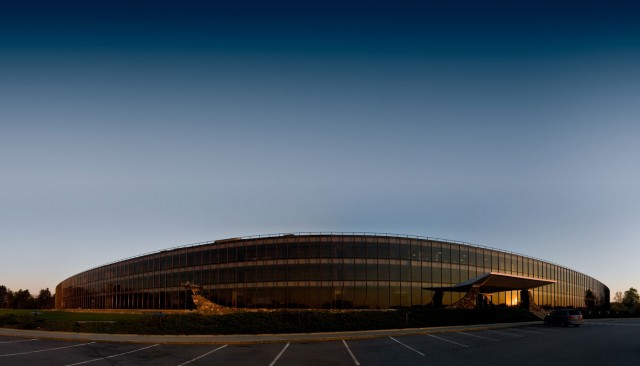
The main building pictured above is the Thomas J. Watson Research Center — one of IBM’s largest laboratories.
Although IBM has existed since the beginning of the 20th century, its main additions to the field of computing come from the 1950s and 60s. In 1956, IBM invented the first hard drive, and in 1968 its researchers created DRAM. In 1981, IBM released a personal computer - the first home computer from ready-made parts, which, in combination with MS-DOS, will eventually lead to a digital revolution that we all still feel.
Today, IBM is the most prolific patent in the world, winning the majority of US patent applications filed for 18 years, including 5,900 patents granted in 2010. For the most part, these inventions are related to the fact that IBM is huge. It contains 425,000 employees and $ 100 billion in revenue, and invests huge amounts of money in research, development, and technology. Unlike Bletchley, Volta, and Bell Lab, IBM Research has many laboratories around the world.
Xerox PARC Laboratories

The youngest laboratory is the Palo Alto Research Center (PARC), which was established as a division of Xerox in 1970. By this time, all the main components of the computer have already been invented. And so, PARC started to work on creating interesting things for computers. Although Xerox was founded in New York, PARC was created in California, undoubtedly offering more freedom for its inventors and engineers, and less management oversight.
Researchers at PARC laboratories claim the invention of Ethernet and laser printers on a hardware basis, as well as the creation of some software: almost every design paradigm used by modern computers; WYSIWYG editing, graphical interface, raster graphics, Smalltalk language, OOP.
These inventions ended in 1973 with Xerox Alto. Unfortunately, Alto was never intended for commercial purposes, and only 2,000 units were built, but don’t worry, Apple’s legacy from 1977 has been used by Apple, and since 1984 by Macintosh.
Silicon (Silicon) Valley
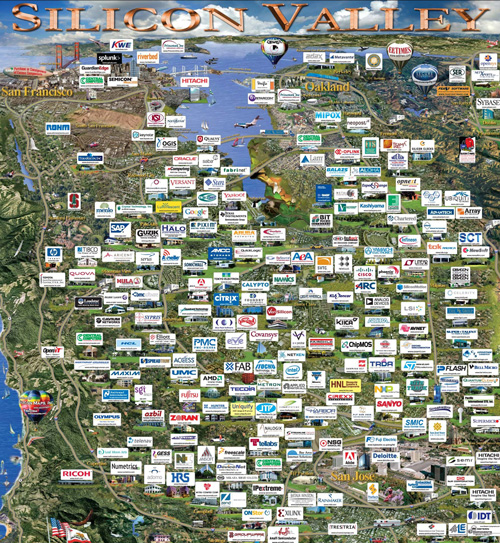
Finally, we must visit the largest computer lab in the world - Silicon Valley. Believe it or not, Santa Clara Valley, a thin strip of San Francisco, owes its existence to Stanford University.
Stanford was built in 1881 by Leland Stanford, a railway magnate who organized the first transcontinental railroad from California to Utah. When his son died, he bought 8180 acres of land and founded a university in his honor. For the first 50 years, Stanford acted as a hub for engineering and industrial interests, and then in 1945, during World War II, Frederick Terman took on the role of dean of the School of Engineering and Silicon Valley, such as we know it today, began to flourish.
In 1951, Terman created the Stanford Industrial Park for the sole purpose of renting land for high-tech firms. Hewlett-Packard, Kodak, Lockheed, and GE quickly moved there and Terman was made vice-rector. In 1955, Stanford statistics in science and design bureaus began to improve in order to win a research grant from the US Department of Defense. This in turn attracted more companies to Silicon Valley. Then came the boom in the semiconductor industry. In the 60s and 70s, Silicon Valley takes on the status of the capital of the digital world.
Finally, in 1969, the ARPANET network from Stanford University was created, as one of four terminals. ARPANET eventually turns into the Internet, and then you know.
This is what it means to unite the right people in the right place!
So it turned out throughout the history of digital technology.
Let us list 6 laboratories that have made, in my opinion, the most significant contribution to the development of digital technologies:
Bletchley Park

')
She holds the title of "first computer lab." It began to develop during the First World War in Great Britain. Bletchley Park was tasked with not only deciphering the communications of the Nazi Wehrmacht, but also with the development of new cryptographic systems in order to keep the Allied armies and fleet safe.
Even today, 65 years after the war, we do not know which inventions arose from Bletchley Park as a state secret. 12,000 of its employees were required to sign a non-disclosure pact. Many achievements in the field of cryptography and cryptanalysis were made by Alan Turing, but they invented not only Bombe, which was one of the first electromechanical computers and the key to deciphering the German Enigma machine. Bletchley Park is also home to the first colossus programmable digital computer.
Laboratory "Volta"

The Volta Laboratory was created in Washington with the money that Alexander Graham Bell (erroneously) was awarded for inventing the telephone.
Volta Laboratories ascribes early innovations that led to the invention of fiber-optic networks, magnetic data storage, and even the invention of office machines. These patented inventions — Bell’s original telephones, and many others — will form the basis of Bell’s American telephone company. This company was eventually exterminated by its subsidiaries, for tax reasons, believe it or not.
Bell Labs

If Volta Lab laid the foundation for networks, and Bletchley Park became a pioneer in computer hardware and software, Bell Labs are the cornerstone that combined both concepts to create high-performance computing architectures. In 1925, AT & T and Western Electric joined the research teams at Bell Laboratories in the construction of the Manhattan branch, with the main goal of developing the best switches for telephone exchanges for the fastest growing telephony in North America.
Yet, the researchers found much more than telephone switches. In the laboratory, Bell invented the undecipherable one-time block cipher, radio astronomy, stereo recordings, speech synthesis, photoelectric elements and, most importantly, in 1947, the transistor. The most famous inventor at Bell Lab is probably Claude Shannon - one of the founding fathers of information theory, along with Alan Turing, and the inventor of modern, mathematical cryptography.
The Bell Labs story, however, does not end there. In the 1960s, Bell Laboratories created the main carrier of almost all wireless protocols and DSL, orthogonal frequency division multiplexing (OFDM), even the first charge coupled device (CCD) was invented.
Finally , in 1969, the Bella Labs built the Unix operating system, and in 1970 compiled the C programming language.
It is possible that with such inventions as the transistor and Bell Labs Unix deserve the prize "best laboratory", but we have to visit some more laboratories.
IBM Research

The main building pictured above is the Thomas J. Watson Research Center — one of IBM’s largest laboratories.
Although IBM has existed since the beginning of the 20th century, its main additions to the field of computing come from the 1950s and 60s. In 1956, IBM invented the first hard drive, and in 1968 its researchers created DRAM. In 1981, IBM released a personal computer - the first home computer from ready-made parts, which, in combination with MS-DOS, will eventually lead to a digital revolution that we all still feel.
Today, IBM is the most prolific patent in the world, winning the majority of US patent applications filed for 18 years, including 5,900 patents granted in 2010. For the most part, these inventions are related to the fact that IBM is huge. It contains 425,000 employees and $ 100 billion in revenue, and invests huge amounts of money in research, development, and technology. Unlike Bletchley, Volta, and Bell Lab, IBM Research has many laboratories around the world.
Xerox PARC Laboratories

The youngest laboratory is the Palo Alto Research Center (PARC), which was established as a division of Xerox in 1970. By this time, all the main components of the computer have already been invented. And so, PARC started to work on creating interesting things for computers. Although Xerox was founded in New York, PARC was created in California, undoubtedly offering more freedom for its inventors and engineers, and less management oversight.
Researchers at PARC laboratories claim the invention of Ethernet and laser printers on a hardware basis, as well as the creation of some software: almost every design paradigm used by modern computers; WYSIWYG editing, graphical interface, raster graphics, Smalltalk language, OOP.
These inventions ended in 1973 with Xerox Alto. Unfortunately, Alto was never intended for commercial purposes, and only 2,000 units were built, but don’t worry, Apple’s legacy from 1977 has been used by Apple, and since 1984 by Macintosh.
Silicon (Silicon) Valley

Finally, we must visit the largest computer lab in the world - Silicon Valley. Believe it or not, Santa Clara Valley, a thin strip of San Francisco, owes its existence to Stanford University.
Stanford was built in 1881 by Leland Stanford, a railway magnate who organized the first transcontinental railroad from California to Utah. When his son died, he bought 8180 acres of land and founded a university in his honor. For the first 50 years, Stanford acted as a hub for engineering and industrial interests, and then in 1945, during World War II, Frederick Terman took on the role of dean of the School of Engineering and Silicon Valley, such as we know it today, began to flourish.
In 1951, Terman created the Stanford Industrial Park for the sole purpose of renting land for high-tech firms. Hewlett-Packard, Kodak, Lockheed, and GE quickly moved there and Terman was made vice-rector. In 1955, Stanford statistics in science and design bureaus began to improve in order to win a research grant from the US Department of Defense. This in turn attracted more companies to Silicon Valley. Then came the boom in the semiconductor industry. In the 60s and 70s, Silicon Valley takes on the status of the capital of the digital world.
Finally, in 1969, the ARPANET network from Stanford University was created, as one of four terminals. ARPANET eventually turns into the Internet, and then you know.
This is what it means to unite the right people in the right place!
Source: https://habr.com/ru/post/128141/
All Articles